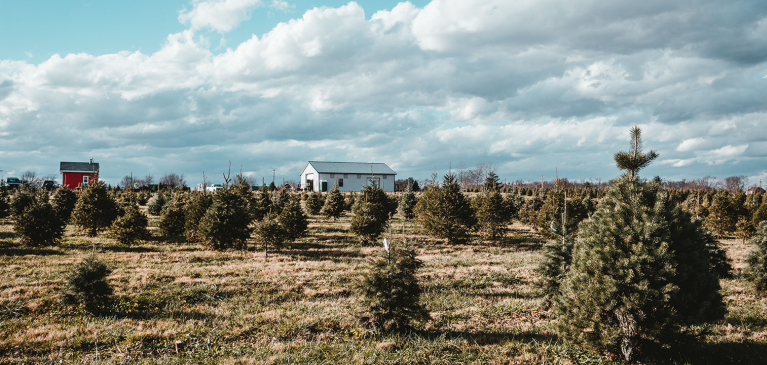
It's all about supply and demand and for the Christmas tree industry, and both are tipping in its favor. The 2008 recession that curbed Christmas tree planting for six years following is leading to a tight supply now, as trees take seven to ten years to develop.
Meanwhile, consumer interest in real Christmas trees is expanding, especially with choose and cut operations offering a family experience.
Plus, there’s a third element. The artificial Christmas tree industry is reporting that supply chain snags are forcing a higher price tag on its product, as well as shipping delays – some missing the season entirely.
Wholesale market
Brian Getty, who founded Getty Tree Farms in Manton, Michigan, in Missaukee County, in 1988 as a 21-year-old with a vision, agrees with the positive outlook.
“There’s a shortage of trees because during the recession, trees weren’t planted and nurseries didn't plant as many seedlings,” he says. “It's taken a while to catch back up. Plus, there are just a lot of older farmers getting out of the industry. I see the industry doing very well for the next ten years or more.”
The trees are sold as wholesale to retail outlets. “We sell to a lot of mom-and-pop tree lots, green houses, flower shops, nurseries and choose and cut operations that run out of trees,” says Getty, who is farming with his sons Kyle, 33, and Kasey, 30, as well as six full-time employees and about eight seasonal employees. Getty’s wife of 33 years, Lisa, takes care of all the book work.
The dry spring this season threatened seedlings, Getty notes.
“Thank goodness by the end of July it started raining and never quit,” he says. “We lost some, but I could have been a lot worse.”
Getty says his Hispanic workers, sourced through Arleen Resource Management (ARM), are crucial to the operation.
“ARM supplies us with labor through the H2A program, which allows migrant labor to legally enter the U.S.,” he said. “Without ARM, things would be much tougher.”
According to the National Christmas Tree Association, 26.2 million real Christmas trees were purchased in 2018 and retail chains such as choose and cut farms contributed to the highest share with 32%, followed by Walmart, Home Depot, and Lowes with 24% and retail lots with 17.% and nurseries/garden centers/others with 13.%. The association also reported retail sales value of the Christmas trees reached $2.56 billion in 2018, an increase of about 25.5% from $2.04 billion in 2016.
Choose and cut success
Patti Lashbrook, a third-generation Christmas tree farmer, purchased Coulters Tree Farm, a choose and cut, 180-acre farm between Attica and North Branch. Michigan, six years ago. The farm opened a week earlier than usual this year.
“The weekend before Thanksgiving we did better than I anticipated,” she said. “I feel like everything's kind of a week early this year because Christmas is on a weekend.”
The farm offers seven varieties and in the last six years has been increasing the planting of Fraser firs, Canaan firs and blue spruce.
Her grandfather Leonard Coulter bought the land when he came home from World War II, started planting Christmas trees in the late 1950s and selling in 1964. He was a pioneer, as the 1950s were just the beginning of Christmas trees being grown as crops, rather than going to the woods and cutting down trees.
Visitors, who are offered saws (if they have none), as well as free hot chocolate, coffee and candy canes, can wander the woods and pick the right tree for their homes.
“We have big trees, small trees, Charlie Brown's and deer-hunter specials – sometimes the deer shape them more than we would like,” he said. “For a small fee, trees are shaken and baled.”
“I think the outlook for the industry is positive,” says Lashbrook. “A lot more families are going the route of a real tree, or a combination for different areas or rooms in the house or porch. People are wanting to incorporate a real tree into their holiday, even if they have a fake one.


